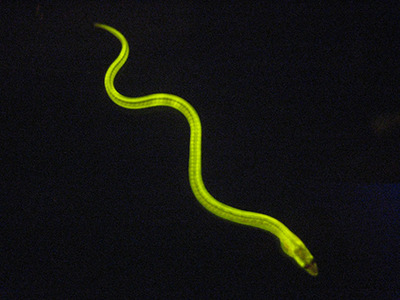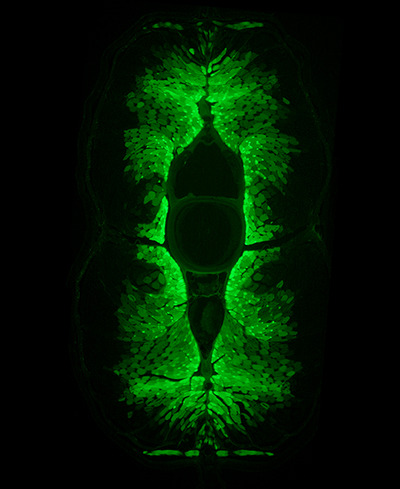Fluorescent eel lights up the path to assay development
Monday, 17 June, 2013
Researchers from the RIKEN Brain Science Institute, led by Drs Atsushi Miyawaki and Akiko Kumagai, have discovered a fluorescent protein in the Japanese Unagi freshwater eel. Not only is this the first fluorescent protein found in vertebrates, but it could also be used to help save human lives.
The researchers knew from previous scientific observations that the Unagi eel was fluorescent - “a rare property in nature”, according to Dr Miyawaki. They cloned a gene from the eel and found a fluorescent protein they named UnaG (Unagi Green protein), a member of the fatty-acid-binding protein (FABP) family.

But the protein’s powerful green light emission had to be activated by a natural chemical, which the team discovered was a molecule called bilirubin - a breakdown product of blood haemoglobin and a potent antioxidant. More importantly, it is known as a clinical health biomarker, widely used in hospitals for several clinical blood tests including haemolysis, neonatal jaundice and the assessment of liver function.
The researchers determined the atomic structure of UnaG and found that the protein had a unique pocket and bound bilirubin very tightly to activate its light emission.
“We used this high-affinity and high-specificity interaction to establish a fluorescence-based human bilirubin assay with promising clinical utility,” the researchers explained. The new assay has high sensitivity, accuracy and speed that may become the global clinical standard and can be used in developing countries where child liver health is a major issue.
“We believe the system is going to revolutionise the clinical measurement of bilirubin in hospitals worldwide and lead to a better understanding of blood and liver metabolism in humans, and the treatment of diseases like kernicterus and jaundice,” said Dr Miyawaki.

UnaG is only present in the eels’ muscle cells; the researchers suspect it helps the creatures to control their muscle recovery from long-distance migrations. Thus, Dr Miyawaki believes it might also assist human health in the area of bilirubin metabolism and muscle physiology during endurance exercise.
The breakthrough has the potential to save not only human lives but those of the eels themselves. The Unagi are endangered, as are European and American freshwater eels which contain UnaG-like proteins. The discovery of UnaG may initiate legislation to conserve endangered eel species; Dr Miyawaki certainly hopes so.
“Before the discovery of UnaG, I couldn’t imagine that basic science could have such a direct impact on human health,” he said. “From a simple eel, we found a new path to the clinic.”
How light helps plants survive in harsh environments
Researchers from National Taiwan University have uncovered how light stabilises a key...
SKA-Low's first image of the universe released
The image is an indication of the scientific revelations that will be possible with the...
Which blood test is best at monitoring ALS?
A new study compares three types of blood biomarkers: neurofilament light chain proteins, glial...




